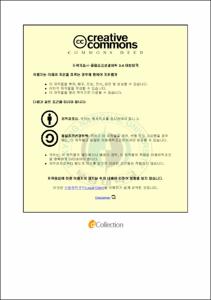디스플레이 소재용 적‧청 안료와 분산졸의 제조 및 특성에 관한 연구
- Abstract
- Nano-sized ε-phase copper phthalocyanine (ε-CuPc) and diketopyrrolopyrrole (DPP) derivatives have been used as high quality ink, paint, plastics and liquid crystal display (LCD) color filter material due to its unique color, bright hue and chemical stability. The production of ε-CuPc and diketopyrrolopyrrole (DPP) derivativesis are dependent on several factors such as shear force, solvent, temperature and the presence of a suitable derivative.
In this study, we synthesized red 254 DPP pigments and ε-CuPc in various condition such as solvent, temperature and derivative. Then chemical structure of sample was confirmed by utilizing infrared spectroscope. Particle size and shape were evaluated by using transmission electron microscope (TEM), field emission scanning electron microscope (FE-SEM) and particle size analyzer (PSA). Then their properties as LCD color filter material according to the particle-size control in various condition such as solvent treatment, introduction of derivatives, ball-mill process and hybrid milling. Finally, properties as dispersion sol were analyzed by tobiscan and contrast ratio tester. As a result, we were able to produce high-performance red‧blue color pigments with various particle size and distribution.
- Issued Date
- 2014
- Awarded Date
- 2014. 2
- Type
- Dissertation
- Publisher
- 부경대학교
- Affiliation
- 대학원
- Department
- 대학원 공업화학과
- Advisor
- 박성수
- Table Of Contents
- Contents
Contents........................................................................................................................ⅰ
List of Tables...........................................................................................................ⅵ
List of Figures..........................................................................................................ⅶ
List of Scheme..........................................................................................................ⅺ
Abstract.......................................................................................................................ⅻ
제 1 장. 서론..............................................................................................................1
제 2 장. 이론적 배경...................................................................................................3
2-1. 안료.....................................................................................................................3
2-1-1. 안료의 정의................................................................................................3
2-1-2. 안료 발색 원리..........................................................................................3
2-1-3. 유기 및 무기 안료....................................................................................8
2-1-4. 안료의 역사................................................................................................9
2-1-5. 안료의 주요 물성....................................................................................10
2-1-6. 안료 입자와 물성....................................................................................13
2-1-7. 안료 유도체..............................................................................................13
2-2. LCD..................................................................................................................15
2-2-1. LCD의 역사..............................................................................................15
2-2-2. LCD의 동작원리 (TN형)......................................................................17
2-2-3. TFT-LCD.................................................................................................19
2-2-4. 색 구현 원리............................................................................................21
2-2-5. LCD 컬러필터.........................................................................................23
2-2-5-1. BM 증착.............................................................................................24
2-2-5-2. RGB 패턴 형성.................................................................................24
2-2-5-3. 공통전극 ITO의 형성......................................................................25
2-2-5-4. 컬러기판 검사....................................................................................26
2-2-6. LCD 컬러필터용 안료............................................................................28
2-2-7. LED BLU를 사용한 LCD.....................................................................30
2-2-8. 시장현황.....................................................................................................30
2-3. 분산 및 입도 평가.........................................................................................32
2-4. 레올로지...........................................................................................................35
제 3 장. LCD 적색용 DPP Red 254 화합물의 안료화 및 특성................38
3-1. 서론...................................................................................................................38
3-1-1. 디케토피롤로 피롤(diketopyrrolopyrroles : DPP)..........................38
3-1-2. Diketopyrrolopyrrole계 (DPP) 안료...................................................39
3-1-3. Diketopyrrolopyrrole계 (DPP) 안료 분산 유도체..........................40
3-2. 실험...................................................................................................................42
3-2-1. 시약 및 측정............................................................................................42
3-2-2. DPP red 254 및 264 크루드의 무용매 합성[41]............................42
3-2-3. 용매처리 효과..........................................................................................43
3-2-4. 유도체 첨가함량에 따른 실험..............................................................43
3-2-5. 볼밀을 통한 입도 분포 조절................................................................44
3-3. 결과 및 고찰...................................................................................................47
3-3-1. Red 254 및 264 크루드의 무용매 합성............................................47
3-3-2. 용매처리 효과..........................................................................................50
3-3-3. 유도체 첨가함량에 따른 실험..............................................................57
3-3-4. 볼밀을 통한 입도 분포 조절................................................................61
3-4. 결론...................................................................................................................65
제 4 장. 하이브리드 밀링을 통한 LCD 청색용 blue 15:6의 나노화...66
4-1. 서론...................................................................................................................66
4-1-1. 프탈로시아닌(Phthalocyanine)의 역사...............................................67
4-1-2. 동프탈로시아닌의 합성법......................................................................67
4-1-3. 동프탈로시아닌의 결정상......................................................................70
4-1-3-1. α형 동프탈로시아닌..........................................................................70
4-1-3-2. β형 동프탈로시아닌.........................................................................71
4-1-3-3. ε형 동프탈로시아닌..........................................................................71
4-1-4. 동프탈로시아닌의 안료화......................................................................79
4-1-5. 동프탈로시아닌의 분산..........................................................................80
4-1-6. Hybrid 밀링..............................................................................................81
4-2. 실험...................................................................................................................83
4-2-1. 시약 및 측정............................................................................................83
4-2-2. ε상 동프탈로시아닌 크루드의 합성...................................................84
4-2-3. 용매 pH에 따른 합성 수율 및 결정상..............................................86
4-2-4. 가열방식에 따른 합성조건....................................................................86
4-2-5. 분자설계를 통한 물성 향상..................................................................87
4-2-6. 프탈로시아닌 유도체의 합성................................................................87
4-2-6-1. Copper tetra nitro phthalocyanine (TNCuPc)의 합성..........87
4-2-6-2. 옥소티타늄 프탈로시아닌 (TiOPc)의 합성................................89
4-2-6-3. 프탈이미드가 치환된 동프탈로시아닌 (PICuPc)......................89
4-2-6-4. Copper tetra carboxylic acid phthalocyanine (TCCuPc) 의
합성......................................................................................................90
4-2-7. 나노화 공정..............................................................................................91
4-2-7-1. 볼밀을 이용한 나노화......................................................................91
4-2-7-2. 비드밀을 이용한 나노화.................................................................91
4-2-7-3. 하이브리드 밀링을 이용한 나노화...............................................92
4-3. 결과 및 고찰...................................................................................................93
4-3-1. ε상 동프탈로시아닌 크루드의 합성분석...........................................93
4-3-1-1. FT-IR 분석........................................................................................93
4-3-1-2. 분광학적 분석....................................................................................93
4-3-1-3. X선 결정 분석...................................................................................93
4-3-2. 온도에 따른 합성조건............................................................................97
4-3-3. 용매 pH에 따른 합성 수율 및 결정상..............................................99
4-3-4. 가열방식에 따른 합성조건..................................................................102
4-3-5. 분자설계를 통한 물성 향상................................................................104
4-3-6. 유도체 종류에 따른 동프탈로시아닌 결정 전이 거동.................108
4-3-7. Hybrid 밀링............................................................................................112
4-4. 결론.................................................................................................................117
제 5 장. LCD용 적색‧청색 안료의 분산졸 제조 및 특성......................118
5-1. 서론.................................................................................................................118
5-1-1. 안료의 분산............................................................................................118
5-1-2. 명암비.......................................................................................................124
5-1-3. 명암비와 안료........................................................................................124
5-1-4. 칼라필터제조 공정................................................................................125
5-1-5. Millbase...................................................................................................128
5-1-6. Millbase와 안료.....................................................................................129
5-2. 실험.................................................................................................................130
5-2-1. 분산 졸의 제조 및 시편 제작............................................................130
5-2-2. 분석...........................................................................................................130
5-2-2-1. 분산안정성 분석..............................................................................130
5-2-2-2. 분광학적 분석..................................................................................131
5-2-2-3. 명암비 분석......................................................................................131
5-2-2-4. 열분석................................................................................................131
5-2-2-5. 열처리에 따른 색채변화 측정.....................................................131
5-3. 결과 및 고찰.................................................................................................132
5-3-1. 분산안정성..............................................................................................132
5-3-2. 분광학적 특성........................................................................................134
5-3-3. 명암비 분석............................................................................................134
5-3-4. 열적 안정성 분석..................................................................................138
5-4. 결론.................................................................................................................142
제 6 장 종합 결론................................................................................................143
참고 문헌.................................................................................................................145
- Degree
- Doctor
- Files in This Item:
-
-
Download
 디스플레이 소재용 적‧청 안료와 분산졸의 제조 및 특성에 관한 연구.pdf
기타 데이터 / 5.97 MB / Adobe PDF
디스플레이 소재용 적‧청 안료와 분산졸의 제조 및 특성에 관한 연구.pdf
기타 데이터 / 5.97 MB / Adobe PDF
-
Items in Repository are protected by copyright, with all rights reserved, unless otherwise indicated.